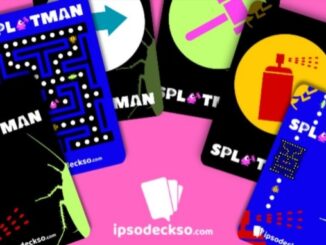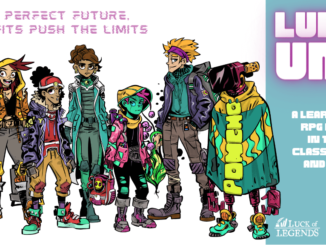
Game-based learning bridges that gap by giving participants the opportunity to apply their learning in real-time.
In today’s fast-paced environment, learning is the need of the hour. Yes, you may get hired because you’re a talented individual with a great track record and have experience with Fortune 500 companies but the reason you’ll stay on top of a company’s “watch-list” is if you keep learning and growing.
We need to learn to learn quickly and efficiently: what you knew five years ago will most likely not work today. Marshall Goldsmith talks about this in his book: ‘What Got You Here Won’t Get You There’. So in search of a powerful learning tool that meets today’s demands of growth, I have discovered Game-Based Learning (GBL) and here’s why I believe GBL will change corporate learning for years to come.
What Got You Here Won’t Get You There is available on Amazon
1. PROXIMITY TO REALITY for authentic behaviors
Game-based Learning has the ability to build a strong association with reality. What happens in a game-based learning environment has a direct correlation with how you might deal with a similar situation in real life. 94% of participants who have played our game-based learning games say that their behaviors in the game are indicative of how they actually respond. Knowing these responses in a closed-circuit environment are far safer than dealing with their consequences in real-life. For instance: counter-productive behaviors, ineffective decision making skills
2. ACCELERATED GROWTH through real experiences
Real growth happens though experience. And we know that the more experience one gathers, the more wisdom they have because the learning associated with an intense experience gets lodged into one’s cerebral cortex. Game-based learning is about taking months, if not years of experience and condensing it into one or two days. An effectively designed game-based learning experience can also create a similar impact because authentic emotions are triggered due to the experience’s closeness to reality.

3. BRIDGE THE KNOWING-DOING GAP
When people fail to apply what they’ve learned it is not because they don’t want to. In a study conducted by Stanford University, it is found that people don’t apply their learning because they aren’t confident enough in their ability to apply the learned skill/behavior. Game-based learning bridges that gap by giving participants the opportunity to apply their learning in real-time. Participants see the impact of their actions right away and are more confident to apply in other parts of their lives as well.
4. MULTI-FUNCTIONED USAGE for Organisational Development (OD) interventions
Imagine a training program that can be used to achieve not one but multiple objectives; learning, behavioral analysis, skill development, succession planning. Because an immersive learning environment is designed to replicate life — it has several simultaneous use cases. Life doesn’t play out in a linear fashion, many things are happening simultaneously. Job, family, health and wellness and every decision you make has not one but many implications. Likewise, game-based learning allows multi-functioned usability through its implementation.
These four elements stand out strongly from a typical experiential learning or classroom training environment. They also have the potential to change the way corporate training happens because of their multifold impact on everything business: ROI, top-line and critical lead measures that can’t be leveraged without effective learning interventions.
This article was originally published in the Gamitar Blog.
- The Effects of Win/Loss States on Learning - 14th January 2022
- Four Reasons Game-Based Learning Makes Corporate Training Better - 10th May 2021
- Increasing Engagement by 2000% Using Games - 17th September 2020





Mohsin, you are so right! I have experienced how game-based learning changes corporate education for the better during my 30 + years of making learning games. You articulate your four reasons with insight, examples, research and plain speak. Persuasive for those looking for better ways to educate folks in the workplace, and affirming for those of us developing & implementing learning games. I particularly appreciate how you describe the multi-level learning objectives that only game-based learning experience can achieve. Thank you for sharing your thoughts and experience.
That’s really kind of you Susan. It’s great to be appreciated by someone with your kind of experience and tenure in the industry.
I would love to get to know you and your work more. Let’s connect on LinkedIn? http://www.linkedin.com/in/mohsinmem